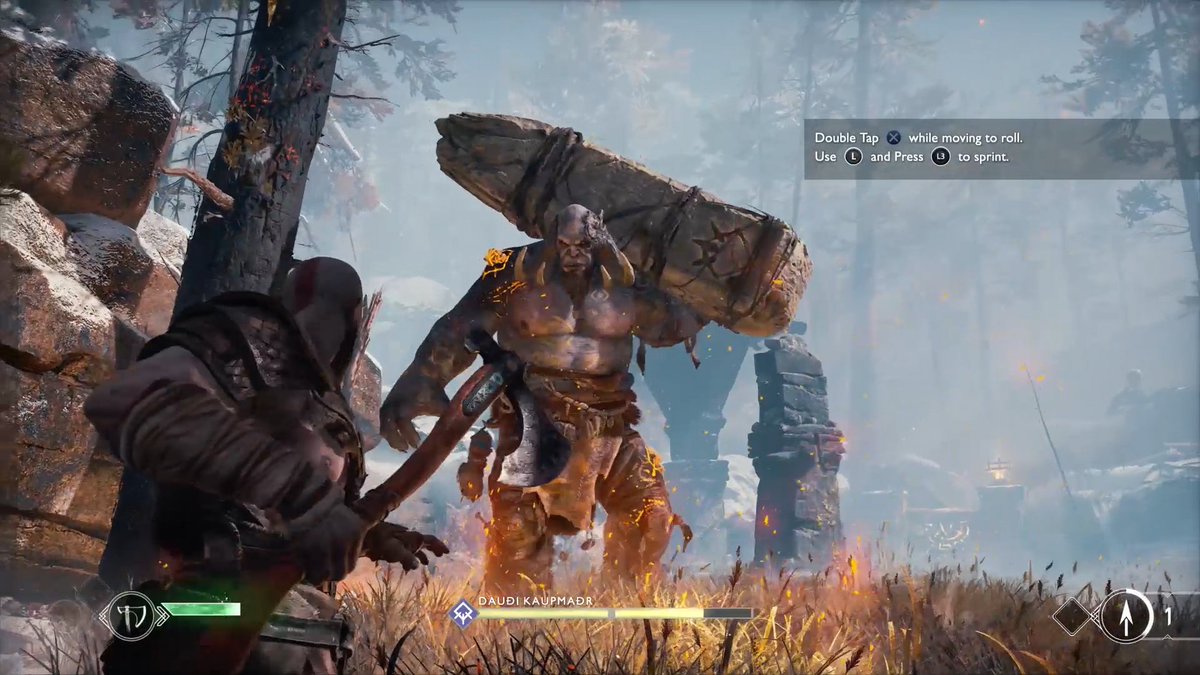
What makes a combo feel POWERFUL? Most melee action games have a series of related attacks the player can STRING together. Combos usually have a FINITE number of moves until they END. Let’s look at Kratos’s barehanded combo in God of War #gamedesign #combatdesign 🧵
CADENCE - Combos are a TOOL the player uses to make PROGRESS on an enemy. The cadence/tempo of a combo gives the player a sense of progression and anticipation towards a satisfying climax or FINISHER. "Even" or linear feeling combos tend to be less exciting. 1/2
Notice in this diagram that the TIME in between each hit grows progressively smaller, EXCEPT right before the final hit where the amount of ANTICIPATION frames is the LONGEST. 2/2 

POSING - Clear/readable/appropriate attack posing is the key to selling the EXPECTATION of power. Since the player has a limited amount of time (milliseconds) to digest each action, strong silhouette changes between each animation provide a sense of immersion/responsiveness. 1/4
A STRONG anticipation (or "Antic") pose is necessary to sell the follow-through and hit. Notice the varied Antic poses for all the attacks. Since the camera is always behind Kratos, the poses are authored with this in mind. 2/4 







The HIT pose (and Hit Pause/FX/Impact SF/controller rumble/camera shake) gives the player a true sense of impact. Like other KEY poses, the hit frames are thoughtfully authored to sell maximum impact. 3/4 







Aside from starting/ending attacks, the RECOVERY of attacks usually serves as the anticipation for the next attack in the combo (especially when button mashing). This is most evident between attacks 3 and 4 since those have the shortest anticipation between each attack. 4/4 

HIT SNAPPING - Hit collision has to register instantly to make a HIT feel RESPONSIVE. The victim instantly snaps to sell that sense of impact. In this image, notice the enemy’s initial body position and then 1 frame later, the enemy is snapped towards the point of impact. 1/2 

However, the enemy isn’t the only actor that snaps. Notice Kratos’s arm CORRECTS itself and snaps into the optimal hit frame. Since melee attacks have multiple active hit frames, the game finds the most powerful pose and “rewinds” the animation to match the contact patch. 2/2 

HIT REACTIONS - The hit reaction is vital to selling the power of the combo. Hit reactions need to sell the TRANSFER of incoming energy. The DIRECTION of the hit is displayed in the victim as seen in the images below. 1/2 



HIT PROPERTIES - The final attack of this combo puts the enemy in an EXTREME reaction that causes it to DISPLACE itself off the ground. In addition to the REACTION INTENSITY, the enemy is open for a kill finisher due to large stun buildup. 

VARIED PERFORMANCE - Kratos NEVER attacks in the same manner. Right cross->Left Shield hook-> Right cross directly into 180 Left Shield backhand ending with a forward Shield thrust. For good measure, the Shield goes from "folded" to fully open to sell progression Kratos style!
• • •
Missing some Tweet in this thread? You can try to
force a refresh












